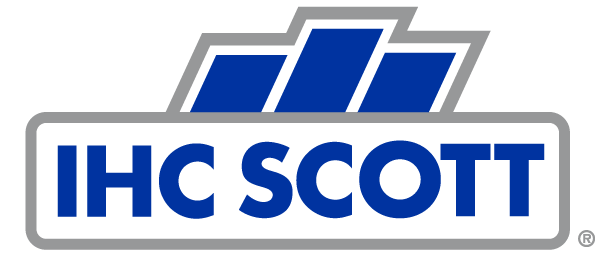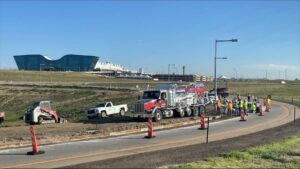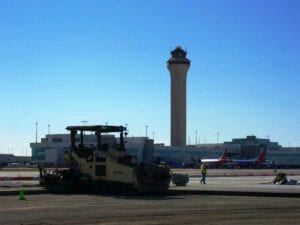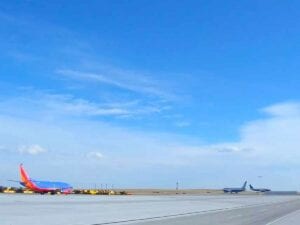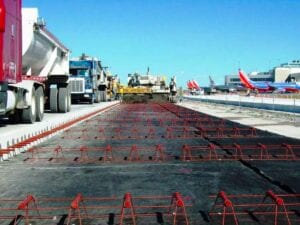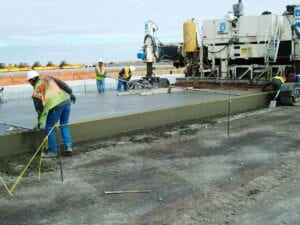DIA Concourse C East Expansion
- Owner: Denver International Airport
- Location: Denver, CO
- Completion Date: 1 Jun 2010
- Awards: Commercial Service & Military Airports Award, 2010 CO/WY ACPA
- Core Competencies: Airports|Concrete Paving|Earthwork|Industries|Services|Utility and Drainage
Related Projects
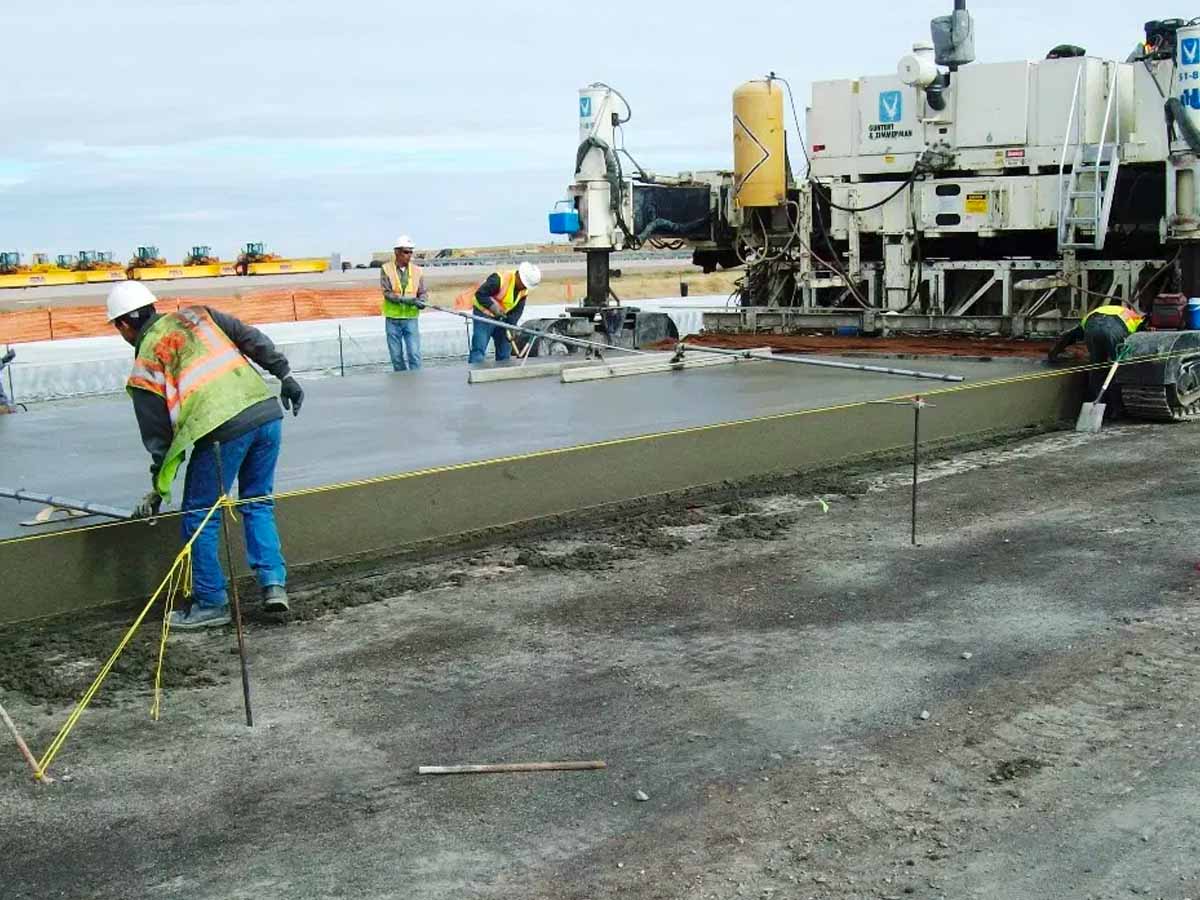
Expansion of Denver International Airport Concourse C to Meet Growing Demand.
Essential to ease growing pains at DIA, this project expanded the Concourse C East Apron to provide more area available to stage aircraft for deicing, while allowing open access to gates and affording overnight parking for six airliners. Designed in 6 milestones, the main project scope included 183,000 sy of 17” PCCP placed over 12” cement treated subgrade and cement treated base course, over 200,000 sy of bond breaker fabric, asphalt Vehicle Service Roads, pavement marking, electrical, including 130 taxiway centerline and edge lights, adjustment of over 27 drainage structures to final paving grades, 54 new structures installed along with 12,432 lf of drainage pipe and 3,700 lf of trench drain, 36 acres of seeding, a jet fuel distribution system for 10 gates and a blast deflecting fence.
Over 17,179 cy of unsuitable subgrade material was encountered, requiring removal and replacement. These efforts resulted in over-excavation of dirt to a depth of 8’ below the top of pavement in an area surrounded by the existing taxiways and service roads. Two water lines, 20 inch and 36 inch, too shallow to provide adequate protection, required excavation and encasement in flowfill to provide the necessary structural support for the pavement section. Stabilization of the main FAA communication duct bank providing all communication to the main airfield control tower was required, while ductwork encasing the wiring for the jet fuel distribution system needed to be lowered.
Completion of the project was instrumental in simplifying aircraft movement around Concourse C during winter de-icing operations. Prior to this project, aircraft on the south side of the Concourse had to switch from ground movement communications to the FAA tower and then back from the FAA to ground communications on the North Side of the concourse for staging for de-icing. This project allows movement and communications to stay under Ground Control, which significantly improves and simplifies aircraft operations and communication.
